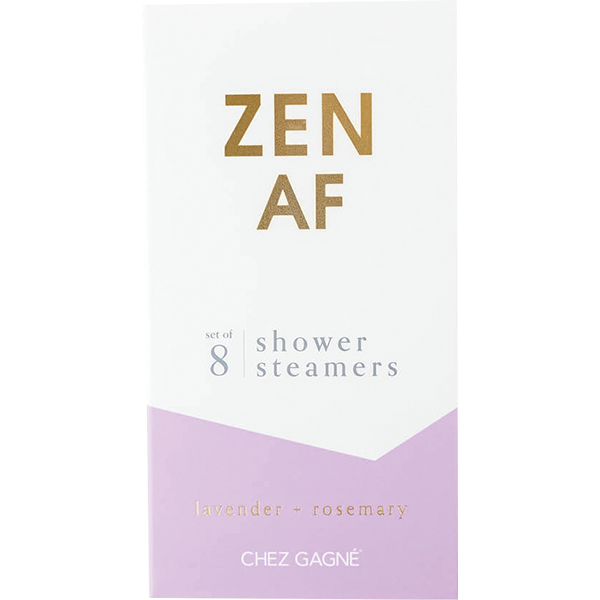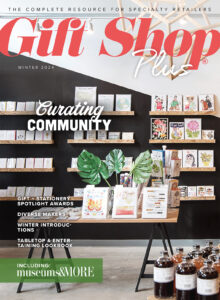Destined for Success
des-ti-na-tion: noun
1. the predetermined end of a journey
2. a place to which one is traveling or to which something is sent
3. a place worthy of travel or an extended visit – often used attributively
With no retail neighbors or walk-by traffic to speak of, Paula Tsiorbas knows her gift shop, The Cozy Nest, is a destination for her customers. It certainly meets Lynn Switanowski’s definition of one: “A destination store is one that customers will initiate a trip specifically to visit,” says Switanowski, founding partner at Creative Business Consulting Group based in Boston, MA.
For the past six years, The Cozy Nest in Somersworth, NH, has been on a busy, commuter road on the corner of a four-way intersection. After two years in a downtown location, Tsiorbas moved The Cozy Nest to its current location, which had formerly been an unfinished furniture store. Its closest neighbors are car dealers and medical offices. To Tsiorbas, the advantages of having a stand-alone shop are many: she can have her own parking lot, additional storage room and is able to set store hours.
Bigger and better
Apart from having a bigger parking lot and being able to set hours, there are many additional advantages to being a “destination” store. Avoiding the high cost of mall rent, stand-alone shops are often larger and have ample room for proper merchandising. They may have space to stock an entire product line and therefore offer a broader selection. The Cozy Nest, for example, has two rooms and the smaller is their seasonal room.
According to Doug Fleener, President of the Dynamic Experiences Group in Lexington, MA, a stand-alone shop also has a better opportunity to communicate its brand on the storefront compared to shops in malls and strip shopping centers.
In addition, Fleener says, stand-alone destination shops have the ability to expand beyond their four walls. Without the restrictions of mall guidelines and schedules, retailers can have an impromptu sidewalk sale or display new and eye-catching products outside. The Cozy Nest has a big farmers porch that Tsiorbas uses like a display window and expanded selling space. In the summer months, the porch is stocked with fresh plants, decorated with wind spinners, to catch the eye of customers as they drive by. During the holidays, wreaths and the Christmas decorations are on sale at the porch. Tsiorbas also has a large, changeable road sign that she uses to feature store promotions. She reports immediate results when she puts product announcements and reminders on the sign, as people have time to read it while waiting at the stoplight. Fleener recommends using such signs to display quotes or pithy sayings thereby engaging potential customers. “The goal isn’t to get the drivers to stop, but rather to get them in the habit of looking for the saying or quote to remind them about the store,” Fleener adds.
Eventful days
Despite many advantages, stand-alone destination gift shops do have challenges—they have to work extra hard to drive traffic to their doors and distinguish themselves from the competition.
Across the country from The Cozy Nest, is another destination gift store, Tilde, in Portland, OR. Owner, Debbe Hamada, notes the challenge of “attracting customers to an area of town that requires a bit of effort to visit. We are a distance from the main shopping areas,” Hamada says. Located in a mid-to-upper middle class neighborhood, the area was formerly known as Antique Row.
To increase sales, Hamada follows the unwritten mandate all destination gift shops must necessarily obey: She actively pursues new customers while staying in close contact with existing ones. To reach new customers, she coordinates several, large annual community events that draw thousands of people who have not been to the area before. One such event is the annual Passport to Sellwood Westmoreland. Participating merchants in Portland hand out brochures that look like passports. Participants visit the merchants and get their passport stamped; no purchase necessary. Visitors that get eight stamps are entered into a drawing for a gift certificate donated by participating businesses. Fifteen or more stamps qualify participants for a grand prize drawing. The one-day event has live music in various locations, a health fair, and food; many merchants offer special activities and sales.
Indeed, events are a sure way to drive traffic to your destination store. Georganne Bender of Kiser and Bender, professional speakers, retail strategists, authors and consultants based in St. Charles, IL, recommends retailers host two kinds of in-store events: major and minor. “You need to host one major in-store event and two to three minor events each month,” says Bender. “A major event is one that builds traffic and packs your store with customers.” Benders cautions against confusing a major event with something that takes a long time to plan. A trunk show can be a major undertaking, but it’s not a major event unless it attracts potential customers who come to watch, and buy something while they’re there. A minor event might be a Saturday full of demonstrations and mini-classes. “Minor events draw customers to your store, but shouldn’t take a lot of time to plan or implement. If the concept of events and promotions is new to you, then begin by running one major event and one minor event for each month of the year,” Bender says. “If you’re already running events on a regular basis, you can add as many as you are comfortable adding,” she says. “Be creative. Try new, fun and off-the-wall events – you’ll know things are catching on when customers ask about your next event!”
Wooing customers
Marketing for destination stores falls clearly into two categories: existing customers and new customers. Susie Hayman, owner of In Your Business of Richmond, VA, suggests hosting an event for your best customers to let them know how special they are. After all, who doesn’t love a special night out just for them? “Serve food, have prizes, provide entertainment—let your existing customers know how special they are,” Hayman says.
Another way to increase traffic and please your best customers at the same time? Customer loyalty programs. Tsiorbas runs a loyalty program where her customers receive a percentage of their purchases in the form of store credit after six visits. Frequently her patrons will treat the store credit as “found money” and treat themselves to a gift, thus establishing her store as a place for gifts and personal purchases.
Marketing your message
Social media outlets like Facebook and Twitter are effective ways to stay in touch with current and past customers, and to promote store events. They work well as part of an overall marketing plan that may include LinkedIn and YouTube videos, as well. “These people have shopped with you already, so they just need to be reconnected to your business on a regular basis,” Switanowski says. “Information on new products sent via email, direct mail or special events will work to maintain this core group of customers. Do not take them for granted. They need to be reminded on a regular basis about your store,” she adds. Facebook, Twitter, websites and blogs are also effective avenues for announcing sales and specials and retailers often provide their online followers a special code for one-day sales and similar offers.
Social media is also a useful marketing tool to gain new customers. Regular posts mentioning products, promotions and events get viewed by “friends of friends”, when your current customers click “like” or retweet your announcements. Janet Rene, a regular at The Cozy Nest, cites the warm and friendly staff and the variety of gift choices as the reason she frequently recommends the shop to others. As Rene’s example demonstrates, current customers are a primary source of new patrons and destination shops count on such word-of-mouth advertising.
Targeted advertising, such as the kind Facebook and Google provide, is another way to help reach potential customers. Such specific targeting is cost-effective, especially since you can set firm daily limits on the amount you are willing to spend.
Points of differentiation
Just like other gift shops, destination shops too must work hard to differentiate themselves from the competition. Visual merchandising is key especially since there is so much room for merchandising. Tilde is known for its dynamic visuals and changes store windows every 6 to 8 weeks. The store has two floor to ceiling windows; one on each side of the front door. Both windows are lit with track lighting. “We have developed a reputation for creative, bright windows and a well merchandised shop,” Hamada says, “We merchandise the interior by colors and we use no traditional retail fixtures. All products are displayed on original mid-century furniture, some of which is for sale,” Hamada adds. Customers drive by just to see the new displays and Tilde’s windows draw in new customers who happen to be driving by at night. Hamada posts pictures of the store’s window displays on various social media outlets and in the store’s newsletter and blog.
Superior customer service is another point of focus for destination stores. Services such as free gift wrap and liberal return policies keep The Cozy Nest’s existing customers coming back. Tilde too boxes and wraps every gift at no additional charge.
Toronto-based Barbara Crowhurst, a retail makeover specialist, suggests offering personalized services like special orders.
At the Tilde, for example, customers have the option of ordering an item on the Tilde website and choosing the store pickup option, to avoid shipping charges. Customers can also be guaranteed that an item they saw on Facebook or in the store blog is reserved and available for them.
“Once we have the customers in the shop,” says Hamada, “we need to succeed in having them feel that it was worth the trip.” Many gift items display the biography of the artist or designer. Additional literature about how the item was made is often included with purchases. Tilde offers a generous refund and exchange policy. As many stores in their area do not offer refunds, Hamada feels this is an added benefit that encourages a customer to shop there.
Bender points out: “Destination retailers today have to do more than just sell ‘stuff.’ These stores must provide customers with a compelling reason to get up off of the couch and into the store.” And from all indications, destination shops are doing just that.






















